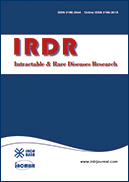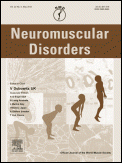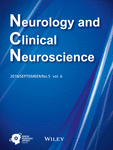
Tremor and Other Hyperkinetic Movements
Scope & Guideline
Exploring the complexities of movement disorders with open access.
Introduction
Aims and Scopes
- Study of Tremor Phenomenology:
The journal emphasizes detailed investigations into different types of tremors, including essential tremor, dystonic tremor, and other movement disorders, aiming to enhance clinical understanding and management. - Clinical and Genetic Research:
There is a strong focus on the intersection of clinical presentations and genetic factors, exploring how genetic variants contribute to hyperkinetic movement disorders and their phenotypic expression. - Innovative Therapeutic Approaches:
The journal covers various therapeutic interventions, including pharmacological treatments, deep brain stimulation, and novel therapies like transcutaneous afferent patterned stimulation, highlighting their effectiveness in managing movement disorders. - Patient-Centric Outcomes:
Research often focuses on patient-reported outcomes and quality of life measures, assessing how different treatments impact daily living and overall well-being in patients with movement disorders. - Multidisciplinary Collaboration:
The journal promotes collaboration between neurologists, geneticists, physiotherapists, and other healthcare professionals to address the complexities of hyperkinetic movement disorders.
Trending and Emerging
- Integration of Genetic Testing:
There is a growing trend towards integrating genetic testing and analysis into the clinical management of movement disorders, facilitating personalized treatment plans based on genetic profiles. - Use of Digital Health Technologies:
Recent publications highlight the use of digital health technologies, such as smartphone applications for tracking symptoms and facilitating telemedicine consultations, as innovative approaches to managing tremors. - Focus on Functional Movement Disorders:
There is an increasing emphasis on understanding and treating functional movement disorders, reflecting a shift in clinical interest and the need for multidisciplinary approaches in management. - Longitudinal Studies on Treatment Outcomes:
Emerging trends include longitudinal studies examining the long-term effects of various treatments on tremor and hyperkinetic disorders, providing valuable insights into the sustainability of therapeutic benefits. - Exploration of Neuroinflammatory Mechanisms:
Research into the neuroinflammatory mechanisms underlying movement disorders is gaining traction, suggesting a potential area for therapeutic intervention and novel treatment strategies.
Declining or Waning
- Historical Perspectives on Treatment:
There has been a noticeable decrease in papers solely focused on historical treatment approaches for movement disorders, reflecting a shift towards more contemporary and evidence-based practices. - Non-Pharmacological Interventions:
Research on non-pharmacological interventions, such as behavioral therapies for movement disorders, appears to be waning, possibly due to a growing emphasis on pharmacological and surgical options. - General Epidemiological Studies:
While epidemiological studies are important, there seems to be a gradual reduction in broad epidemiological analyses, with more emphasis now on specific genetic or clinical characteristics of movement disorders. - Aging and Movement Disorders:
The exploration of aging-related movement disorders has diminished, which may be attributed to a more focused approach on younger populations or specific genetic conditions.
Similar Journals

ERJ Open Research
Connecting Researchers for a Healthier TomorrowERJ Open Research is a distinguished Open Access journal dedicated to advancing the field of pulmonary and respiratory medicine, published by the European Respiratory Society Journals Ltd. Established in 2015, the journal proudly provides a platform for innovative research and comprehensive studies that address vital questions in respiratory health. With an impressive Q1 ranking in Scopus for Pulmonary and Respiratory Medicine and positioned in the top 73rd percentile among its peers, ERJ Open Research is a critical resource for researchers, clinicians, and students alike. The journal’s commitment to open access ensures that high-quality research is readily available to the global community, fostering collaboration and knowledge-sharing. Whether you are looking to publish groundbreaking findings or stay updated on the latest advancements in respiratory medicine, ERJ Open Research is the premier destination for impactful scholarly contributions.

Intractable & Rare Diseases Research
Exploring the Frontiers of Intractable Illnesses.Intractable & Rare Diseases Research is a pioneering journal dedicated to advancing the understanding and treatment of rare and intractable diseases. Published by INT RESEARCH & COOPERATION ASSOC BIO & SOCIO-SCIENCES ADVANCEMENT in Japan, this esteemed journal serves as a critical platform for researchers, clinicians, and healthcare professionals to share groundbreaking findings and developments in the field. With its established Scopus ranking of #238 out of 636 in the General Medicine category, placing it in the 62nd percentile, and its classification in the Q3 quartile for 2023, it is recognized as a significant contributor to the literature on rare diseases. Operating without an open-access model, the journal ensures high-quality content cultivated through rigorous peer-review processes. Through its scope spanning from 2012 to 2024, the journal aspires to bridge gaps in knowledge and foster collaboration among interdisciplinary researchers, ultimately aiming to improve patient outcomes and enhance public health concerning these challenging conditions.

STEREOTACTIC AND FUNCTIONAL NEUROSURGERY
Uncovering Breakthroughs in Functional NeurosurgerySTERREOTACTIC AND FUNCTIONAL NEUROSURGERY, published by KARGER, is a distinguished journal focusing on the evolving fields of neurosurgery and functional neurology. With its ISSN of 1011-6125 and E-ISSN of 1423-0372, this journal has been at the forefront of publishing innovative research since its inception in 1938, securing a prominent position within the scientific community through its commitment to high-quality peer-reviewed articles. As of 2023, it ranks in the Q3 quartile for Clinical Neurology and Q2 for Surgery, reflecting its impactful contributions and relevance to current medical practice. Researchers and practitioners alike will benefit from the journal’s exploration of novel techniques, therapeutic advancements, and clinical outcomes in stereotactic and functional neurosurgery, making it an invaluable resource for those aiming to stay abreast of the latest developments in this dynamic field. Although it does not currently offer open access, readers can access its content via institutional subscriptions, ensuring widespread dissemination of critical research findings aimed at improving patient care and advancing surgical methodologies.

NEUROMUSCULAR DISORDERS
Empowering researchers with cutting-edge discoveries.NEUROMUSCULAR DISORDERS is a premier academic journal published by PERGAMON-ELSEVIER SCIENCE LTD, focusing on the latest research and developments in the fields of neurology, genetics, and pediatric health. With an ISSN of 0960-8966 and an E-ISSN of 1873-2364, this journal has established a significant presence since its inception in 1991, and it continues to contribute to the scientific community with its impactful findings and reviews. The journal boasts a commendable impact factor, reflected in its placement in the Q2 category for Clinical Genetics and Neurology, as well as its positioning in the top tier Q1 for Pediatrics, Perinatology and Child Health according to the latest quartile assessments. With Scopus rankings such as Rank #71/330 in Pediatrics and Rank #51/99 in Clinical Genetics, NEUROMUSCULAR DISORDERS is recognized for its contribution to advancing knowledge in neuromuscular diseases. The journal is essential for researchers, clinicians, and students interested in the intricate relationship between genetics and neurological disorders, providing valuable insights that drive innovation and improve patient care.

Research and Reviews in Parkinsonism
Exploring new horizons in Parkinson's disease management.Research and Reviews in Parkinsonism is an esteemed open access journal dedicated to advancing knowledge and understanding in the field of Parkinson's disease and related disorders. Published by DOVE MEDICAL PRESS LTD, this journal aims to disseminate high-quality research articles, reviews, and clinical studies that focus on innovative approaches to the management, treatment, and understanding of Parkinsonism. Since its inception as an open access journal in 2019, it has become a vital resource for researchers, clinicians, and students alike, facilitating the rapid exchange of information and fostering collaboration across multidisciplinary fields. With its commitment to enhancing the visibility and accessibility of research findings, Research and Reviews in Parkinsonism plays a crucial role in shaping the future of Parkinson's disease research globally. Readers can access the journal online, ensuring that vital information is readily available to all stakeholders in the healthcare community.

CURRENT TREATMENT OPTIONS IN ONCOLOGY
Advancing the Frontiers of Cancer TreatmentCURRENT TREATMENT OPTIONS IN ONCOLOGY, published by Springer, is a premier academic journal dedicated to disseminating cutting-edge research and advancements in the field of oncology and pharmacology. With a commendable impact factor and ranked in the Q1 category in both oncology and pharmacology for 2023, this journal positions itself as a leading resource for researchers, healthcare professionals, and students alike, offering insightful reviews and original articles that critically evaluate treatment methodologies and clinical practices. Covering a wide scope of topics from early detection to innovative therapies, it fosters the translation of research findings into clinical applications. With its convergence years spanning from 2000 to 2024, CURRENT TREATMENT OPTIONS IN ONCOLOGY continues to be at the forefront of oncological research, providing a platform for scholars to explore the latest therapeutic options and improve patient outcomes. Highly regarded in the academic community, this journal is essential for anyone looking to stay informed about the dynamic landscape of cancer treatment.

Therapeutic Advances in Neurological Disorders
Pioneering insights for the treatment of neurological disorders.Therapeutic Advances in Neurological Disorders, published by SAGE Publications Ltd, is a leading open access journal dedicated to the advancement of knowledge in the field of neurology. Since its inception in 2008, this journal has established itself as a vital resource for researchers, healthcare professionals, and students, offering a platform for the dissemination of high-quality research that improves the understanding and treatment of neurological disorders. With a commendable impact factor and ranked Q1 in multiple categories, including Neurology and Pharmacology for 2023, it exemplifies excellence in scholarly contributions. The journal's Scope encompasses a wide array of topics, providing insights that are pivotal for clinical practice and pharmacological development. Additionally, with its commitment to open access since 2017, Therapeutic Advances in Neurological Disorders ensures that its research reaches a global audience, fostering collaboration and innovation in neurological science.

Clinical Genitourinary Cancer
Leading the charge in urological research excellence.Clinical Genitourinary Cancer, published by CIG MEDIA GROUP, LP, is a leading journal in the fields of Oncology and Urology, with an impressive impact reflected in its quartile rankings (Q2 in Oncology and Q1 in Urology for 2023) and strong Scopus rankings (22nd in Urology and 162nd in Oncology). The journal aims to innovate and inspire new research in genitourinary malignancies, providing a platform for the latest findings in diagnosis, treatment, and patient management. With its commitment to high-quality publications since its establishment in 2005, Clinical Genitourinary Cancer serves a crucial role in advancing the understanding of these complex conditions and enhancing clinical practices. Researchers, professionals, and students in the medical community are encouraged to engage with this essential resource, which facilitates open access to pioneering studies that drive the field forward.

npj Parkinsons Disease
Advancing the frontiers of Parkinson's research.npj Parkinsons Disease is a leading open-access journal dedicated to advancing research in the field of Parkinson's disease and related neurodegenerative disorders. Published by NATURE PORTFOLIO, this journal has been on the forefront of scientific inquiry since its inception in 2015, providing a high-quality platform for the dissemination of groundbreaking research. The journal's reputation is underscored by its impressive Q1 rankings in Cellular and Molecular Neuroscience and Neurology categories, as well as its commendable positions in Scopus rankings, placing it within the top echelons of neuroscience and clinical neurology research. With its focus on innovative methodologies and translational studies, npj Parkinsons Disease aims to foster collaboration among researchers, clinicians, and healthcare professionals, ultimately contributing to the improved understanding and treatment of Parkinson's disease. Researchers, professionals, and students are encouraged to explore its rich repository of knowledge, accessible freely since its launch, to stay abreast of the latest developments in this critical area of neuroscience.

Neurology and Clinical Neuroscience
Exploring innovative solutions in neurological health.Neurology and Clinical Neuroscience, published by WILEY, is a pivotal peer-reviewed journal dedicated to advancing knowledge in the fields of neurology and clinical neuroscience. With an ISSN of 2049-4173, it encompasses a diverse range of topics related to neurological disorders, offering a platform for groundbreaking research and clinical practices. Although the journal does not currently operate under an open access model, it aims to foster an inclusive academic environment by providing high-quality content that is accessible to both specialists and general practitioners in the medical community. Despite its relatively recent establishment from 2013 to 2024, the journal has gained recognition with Scopus rankings highlighting its role in clinical neurology and neuroscience spheres. It serves as an essential resource for researchers, professionals, and students seeking to expand their understanding and engage in current discussions surrounding neurological health and diseases.